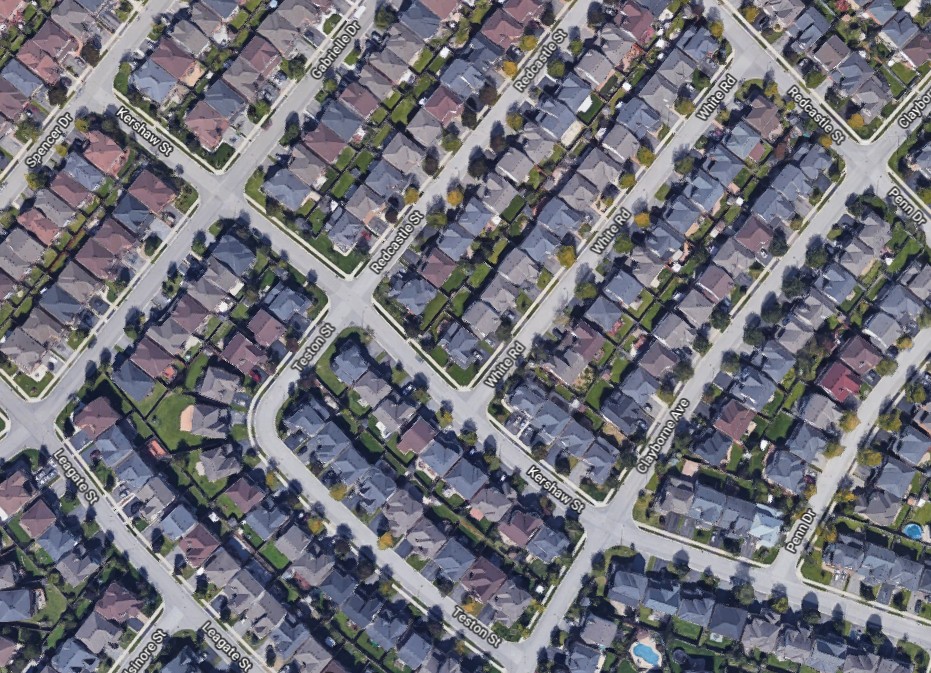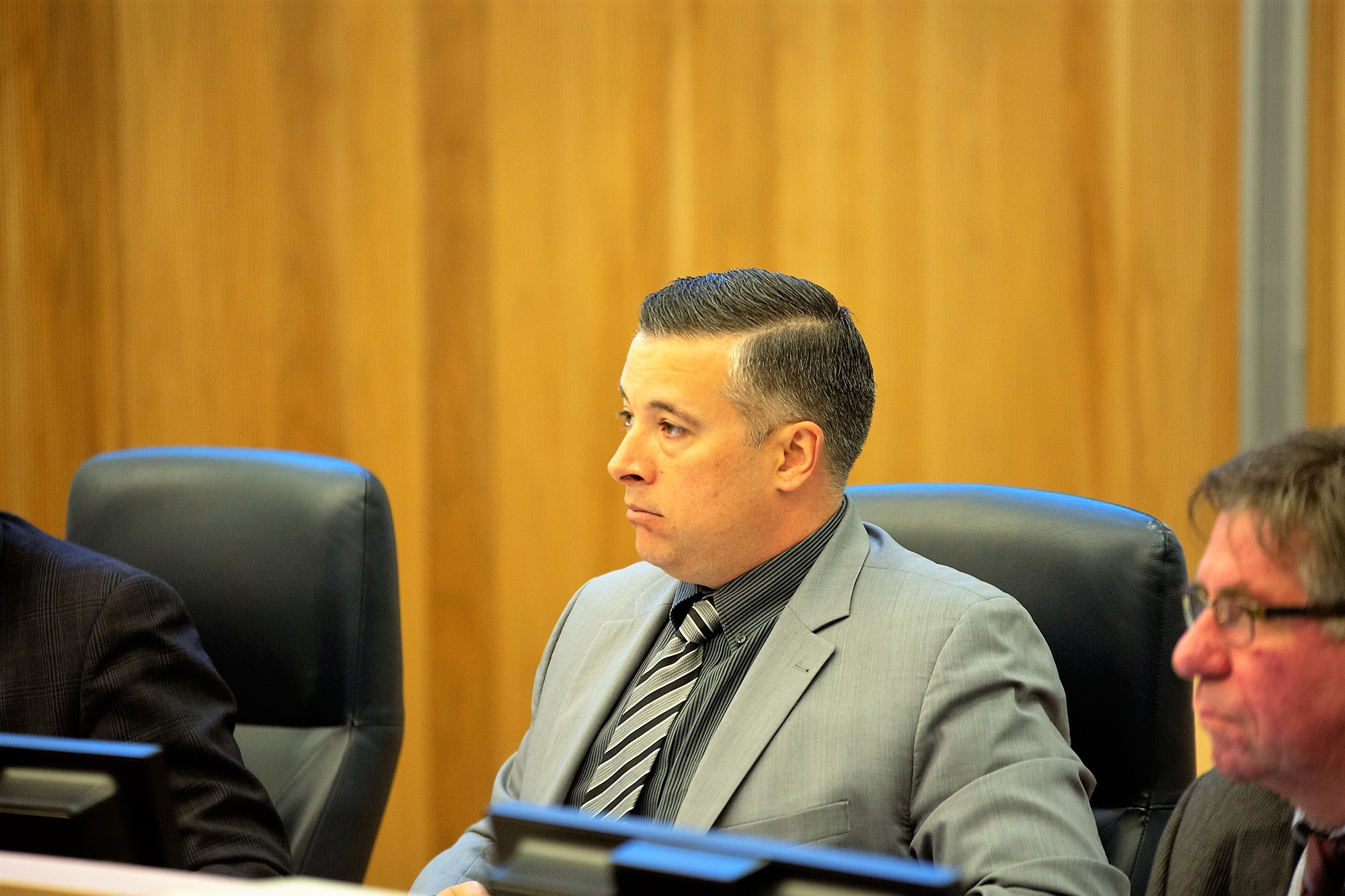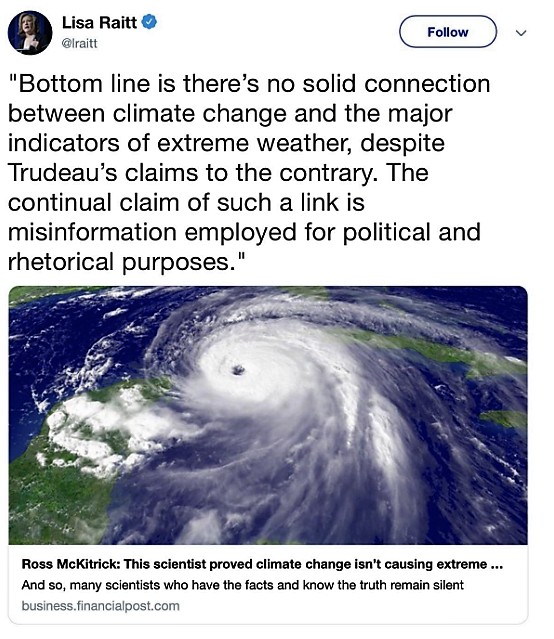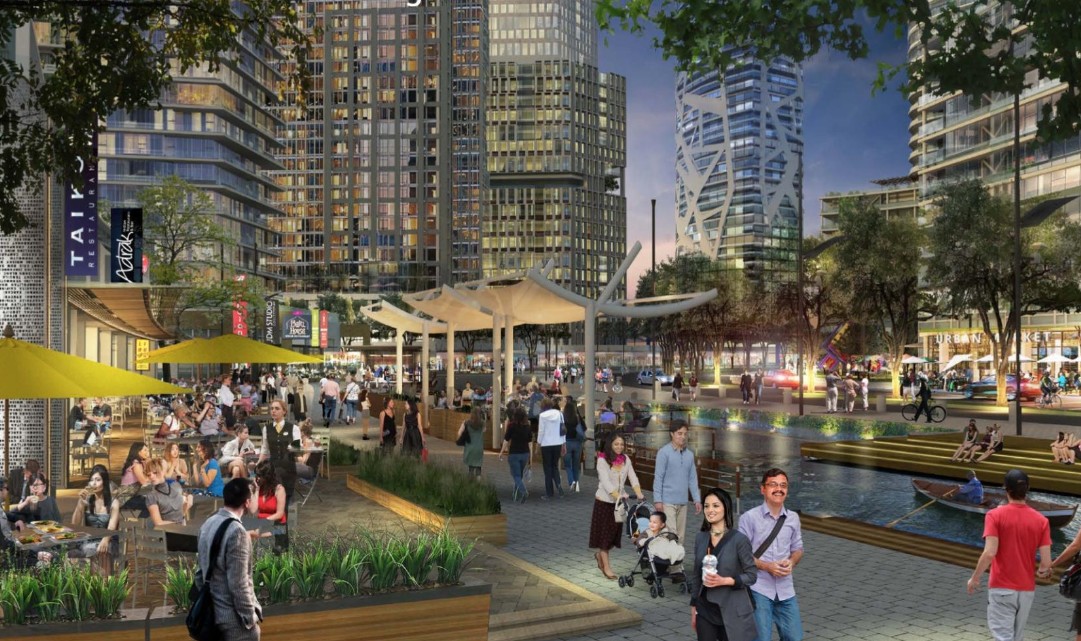
Brampton and the planet need a council that will stop working for developers
They should have known it was wrong, but they couldn’t stop.
They should have known that opening vast acreages of undeveloped land for the building of low slung industrial or residential development wasn’t a land-use plan but a recipe for disaster.
But no politician in this city ever had the clout, will, foresight or guts to throw up a STOP sign and say, ‘Hey, wait a minute, let’s not go down the road of unfettered suburban development.’
This city, led by people with virtually no knowledge of complex urban planning matters, has succumbed to the whims of developers, who use their council pawns to do their bidding.
Maybe it was because these builders gobbled up the land decades ago and were dead set on optimizing profits. Or perhaps the politicians were out to lunch (literally) and everyone was on a sugar high to feed this new capitalistic credo?
It was easy to jump onboard this gravy train because back in the bad old days of hyper-growth (the 1980s to the early 2000s) that’s the way municipalities like Brampton operated – nudge, nudge, wink, wink.
City-building was handed off to the development sector. Money was rolling in from building-related fees, and easily duped councillors thought it was more than enough to pay for the runaway growth. It wasn’t.
So, Brampton was divided and subdivided and new neighbourhoods with monochromatic housing – two-storey, single-family, big backyards and two-car garages – sprung up like mushrooms after a warm summer rain, and mayors like Peter Robertson (the ‘90s) and Susan Fennell (the 2000s) led our walk down the darkened staircase.
They both sought and failed to gain elected office in higher levels of government through Conservative parties. Robertson publicly claimed to be a progressive with an academic bent, while he became so cozy with developers, he eventually worked with them directly after being booted from office by the electorate.
Fennell took her relationship with developers to new heights. They gave millions for her lavish private events, with much of the money, that was supposed to go back to the community, never accounted for.
There were also plenty of councillors along the way who were all part of the game.
By the time Linda Jeffrey won election in 2014, the damage had been done.
Brampton now has one of the most cock-eyed land-use mixes in the Greater Toronto Area, ruined by this give-over to the builders. This developer-built city restricts the ability to raise taxes, or create a humming commercial base with high-return, white collar jobs. No, those lie elsewhere, in places where leaders have not allowed developers to do their job.
Two words are now synonymous with Brampton: sprawl and gridlock.
It wasn’t until the Dalton McGuinty Liberal government took over the province from the Mike Harris-Ernie Eves ‘Common Sense Revolution’ in 2003, that things began to change.
First, Queen’s Park brought in Places to Grow legislation (“Smart Growth”) which forced cities like Brampton to grow up, not out. It was hoped this governor on growth and its densification model would discourage sprawl, offer up more transit options and slowly kill off the concept of strip malls and a gas bar at every major intersection. The principles of smart growth needed cities to tighten up. Car usage would hopefully drop. And public transit would flourish.
Brampton leaders talk out of both sides of their mouth.
Shortly after the 2006 Places to Grow legislation, the Liberals doubled-down by passing the Greenbelt Act, identifying and protecting eco-sensitive lands surrounding the ever-expanding GTA. The idea was to save the lungs of our region from developers so future generations can breathe.
When our handover of these lands was well underway, Brampton became what urbanologist Joel Garreau called an “edge city.” He said the ‘burbs bear little resemblance to a traditional city. They spring from agricultural or scrubland and have indistinct borders. Non-traditional cities have, in an architectural way, tried to “heal a conflicted psyche,” to forge a reconciliation between a reverence for nature and a devotion to progress – however ill-defined progress was in these bad old days.
The result was a city where residents were chained to their cars, neighbourhoods were less livable, and the city core was gutted and soul-less.
Dr. Pamela Blais, founder of Toronto-based Metropole Consultants, warned as far back as the mid-1990s that it’s just too expensive for governments to provide services and infrastructure for the type of subdivisions that developers were accustomed to building – the low-density greenfield kind. In her book, The High Cost of Sprawl, she said low-density, car-dependent neighbourhoods create massive congestion that chokes the Greater Golden Horseshoe economy and its residents. Most GGH communities have experienced about as many smog days as Toronto’s core in recent years. Shockingly, she wrote, the Ontario Medical Association estimated that 9,500 people died prematurely (2008) because of the smog – the vast majority of them in the region’s suburban communities.

Things became so sad in Brampton, that under the McGuinty Liberals, the province threatened severe planning restrictions if the city didn’t stop over-issuing thousands of new building permits for single family units each year – beyond what the province mandated to make room for more dense and affordable housing instead – so developers could keep constructing their sprawling subdivisions. Brampton was told that the giveaway to sprawl would eventually cripple the city financially.
That began to happen sooner than later.
In 2015, Jeffrey called in former Ontario auditor general Jim McCarter to look at the city’s books. It wasn’t pretty. Here’s what he reported:
“About 77% of total property taxes are paid by residential property owners, while the non-residential sector contributes 23% (an alarming balance that is closer to the other way around in economically healthy cities) … current residents should not be unduly impacted by the cost of growth-related new infrastructure requirements. Essentially, this cost should be almost entirely funded by developers …”.
McCarter reported that Brampton homeowners had suffered increases to the city’s portion of their annual property tax bill that were more than twice the rate of inflation, while the city had for years also been eating into its dwindling reserve funds to manage its budget. All this while growth continually failed to pay for growth.
Growth was, and still is, costing the city’s taxpayers a fortune because sprawl, which demands costly infrastructure without creating a healthy commercial tax base to offset the burden on homeowners, has been exactly what the developers want for the vast tracts of land they bought up decades ago. They want to continue monetizing every inch of it.
This is all a preamble to what happened at Brampton council chambers on Wednesday, followed by an announcement from Queen’s Park the very next day.
At council, high school student Shailly Prajapati asked the city to declare a “climate emergency” and join with other cities like Ottawa, Vancouver and Burlington in leading the charge to join a green movement now sweeping the planet. Council voted unanimously to do so. This vote elicited loud applause.

Brampton high school student Shailly Prajapati wants council to take action on climate change
Mayor Patrick Brown said there has been too much “hot air” (aka empty political lip service) and not enough action to help our planet heal. Almost all scientists are convinced it is heating up at a dangerous rate and causing ruinous climate change. We only have to look at the massive flooding across Canada, the wildfires in Alberta and the melting Arctic ice as indications of how pressing the issue has become. Declining air quality across the globe can’t be denied, even by the deniers.
But before you get all misty eyed about what happened in council, you also need to know that the breathless political support for Prajapati and David Laing, another environmentalist, was made as an initiative was taken up by council and led by Ward 2 & 6 Regional Councillor Michael Palleschi. He wanted his colleagues to support a motion by MPP Amarjot Sandhu (PC Brampton West) to resurrect the environmental assessment process for the GTA West Corridor (Highway 413) which would run from Vaughan through Caledon and south down the west side of Brampton before linking up with the 401.
This is the same rookie MPP who has either voted against or absented himself for votes to get a new hospital for his city, to reduce auto insurance rates here and to address education needs in the country’s ninth largest municipality. He has been utterly AWOL. He failed to get a cent for Brampton when his government announced funding for “Hallway Healthcare” and didn’t say a word when his PCs clawed back $90 million for a university campus plan in downtown Brampton that had to be cancelled because of the shocking move.
Sandhu has also blindly supported his government’s efforts to gut environmental policy while handing over land and benefits to developers. Bill 108 passed on Thursday and could lead to a loss of $388 million in fees previously collected from developers to pay for growth, that will now likely be covered by Brampton property taxpayers, according to city staff. The legislation also opens the way for developers to build sprawl instead of following local smart growth planning, because the land-use dispute model will now be returned to the old developer-controlled model of mediation.
Sandhu had zero political experience prior to getting the PC nomination through a questionable process (when new MPPs introduced themselves in the legislature last year he mentioned his experience as an “international student”). The former Brampton real estate agent has barely said a word in the legislature since election, but is now, all of a sudden, the darling of a council that wants to see a new massive highway corridor rammed through the city.
How this council could, at one moment, pass a motion to support a ‘climate emergency’ and then put in motion a plan to build a highway that will add more CO2 gases to the atmosphere, create more land gobbling sprawl and more crippling gridlock, is anyone’s guess?
Ironic?
This conundrum seemed to gather more menace and meanness a day later when the provincial PCs under Premier Doug Ford passed Bill 108 which, in effect, will literally “pave” the way for the 413 and massive sprawl. This future development will no doubt target Brampton because it has the most available land of any community in the GTA, and it’s as obvious as climate change that Palleschi, no stranger to developers, is going to make sure they get exactly what they want. Why? What is the second-term councillor, who also had zero experience in public office before taking over the seat his father held for almost four decades, getting for all his lobbying efforts in support of this highway and the developers who will make millions after assembling the land over the past decades?
Do the residents who voted for him want this sprawl? Do the taxpayers who live in his wards believe this highway, that would only either take them southwest toward Milton or northeast toward Vaughan, is worth the congestion and future costs they will likely be forced to help with? Does the young councillor have some insights about smart growth and modern urban planning that could explain why so many experts in the field are wrong in their criticism of the new highway plan? Is it a barrier to investing in smart transportation initiatives that could get commuters and commercial goods moving in a much more efficient and ecologically friendly way? And is it a terrible way to approach land-use in a city that desperately needs to attract high-return white-collar commercial investment while building the housing of the future, not more sprawling single-family homes that the developers want to slap up, which will create even more imbalance within our out of whack property tax base?
We don’t know because Palleschi didn’t address any of it. It’s unclear why he didn’t hold full, public consultations with his constituents, before pushing them down this path. His motion passed quickly with no council debate. That’s bizarre considering the move could dictate how the city accommodates as many as 100,000 new residents along the proposed highway corridor.
Palleschi told The Pointer the highway will lead to “employment opportunities”. Okay, so if you’re taking the dramatic and bold step of moving such a motion, what are these opportunities? Councillor Palleschi, can you tell us who these companies are that want to move here if the highway is built? How many will they employ, in what sorts of jobs? What benefits will there be to the city?

Brampton Councillor Michael Palleschi
We don’t know.
Here are two things we do know: Developers who own the land along the corridor will make a fortune if the highway is built, triggering construction of the subdivisions they want alongside; and the highway plan is being aggressively pushed by Caledon’s Conservative-leaning Council, including its Mayor, Allan Thompson, who sold family farm-land along the proposed highway corridor to a developer for $9.4 million (but won’t get the back half of it unless the land is approved for development), and Jennifer Innis, a former PC party staffer who recently became chair of the Toronto Region Conservation Authority, which will be influential in the approval process for the highway, after the development industry lobbied aggressively for her to get the job.
The woman Innis defeated to head the planning body, former Toronto city councillor Maria Augimeri, told the Toronto Star, after the Caledon Councillor won the chair in an 11-10 vote by the TRCA board, “We have people sitting around the (board) table there now who are there for development interests, not for the interests of the drinking water for future generations.” She told the Star that developers try to gain any influence. “That should not only worry people, that should frighten people.”
The industry stands to make billions of dollars along the massive GTA-West Highway corridor, if it gets built.
The move by Palleschi and the rest of Brampton Council Wednesday goes hand-in-hand with the new legislation passed by Doug Ford and his spineless followers on Thursday.
Critics charge that developers “won the lottery” with the passage of Bill 108. The 'More Homes, More Choice Act' is a blatant blast from the past, a return to yesteryear when the last PC government in power under Mike Harris and his successor Ernie Eves, led the charge to overbuild the ‘burbs. This is what led, in a perfect line, to our present-day problems.
The bill was passed in the guise of “improving our housing stock,” but in the belly of this beast, there stirs something more insidious. Mayors and city officials across the province blasted the bill, pointing out that no language in it guarantees affordable housing or smart growth, contrary to Ford’s claims. It will lead to more sprawl and whatever gives developers the most profit. Yes, it could derail this city’s attempt to pull itself out from its lousy land-use past.
In Brown’s inaugural address at the Rose Theatre late last year, he vowed not to return this city to a development model that screams sprawl, and again includes an ocean of single-family units built row upon monotonous row in cheaply constructed subdivisions that from satellite images look more like the columns of makeshift tents erected in refugee camps.
Prajapati spoke eloquently and with emotion for her youthful generation. She is worried they will inherit a world bruised beyond recognition by people like Harris-Eves, and now their reincarnate, Ford.
Perhaps, as she gains knowledge, the teenager will make the connection between bad, developer-driven municipal land-use planning and its devastating effect on the environment.
When the Intergovernmental Panel on Climate Change (IPCC) released its deeply disturbing report in the fall, the United Nations affiliate group brought together expert research by more than 6,000 scientists around the globe who concluded the earth’s temperature is increasing much faster than previously believed, due to human activity.
In a ground-breaking move the IPCC appealed to local governments to do the one key thing they can to effectively address the crisis – adopt smarter land-use policies. No more destruction of ecologically sensitive areas, no more sprawl, with energy sucking homes and smarter transportation to get vehicles off the roads. Highways that create single-occupancy use, just like the proposed 413, are among the worst causes of temperature increase.
Even with the exhortation from the global scientific community, and proof from transportation experts that building more highways only ever creates more congestion, should we be surprised by Premier Ford’s idiotic mandate – driven by a party seeking to form public policy on the fly by looking in the rear-view mirror, a clownish plan largely crafted by his developer friends who helped put him in power?
Yes, these Luddites are hardly eco-warriors – but the rot rises up a notch to those on Parliament Hill. The latest OMG moment comes courtesy of Lisa Raitt, the federal Conservative Party member from Milton, a former cabinet minister and current Deputy Leader of the Opposition.
Again, Twitter is the social media platform chosen to make her look like a fool. She is, of course, following in illogical thinking pattern of another tweet-happy cowboy who Trumped her as an early climate-change denier. Raitt’s tweet Friday (and then quickly deleted yesterday) was so over-the-top stupid, it immediately went viral – and even outdistanced tweets about the Toronto Raptors’ historic win over the Golden State Warriors in the fourth game of the NBA finals on Friday night.
@lraitt wrote: “Bottom line is there’s no solid connection between climate change and the extreme weather, despite [Justin] Trudeau’s claim to the contrary. The continual claim of such a link is misinformation employed for political and rhetorical purposes.”

She deleted the remarks, which were apparently inspired by one of the many flourishing pseudo-experts gaining infamy largely because of politicians like Raitt, who post first and deny later. But it was too late for her. As with all things in our digital world, nothing ever really disappears and we’re always being watched, especially those like Raitt who have the potential to do so much more damage. Her deleted tweet was captured and has been circulated and re-tweeted thousands of times, lest she try to fool us come election time.
Are we the ones being fooled right now in our own city? Did Brampton council show a Raittian level of ignorance and utter disregard for the taxpaying residents they supposedly represent when not one raised a hand in protest to supporting a plan by the hapless Sandhu to back an EA for the 413?
The Pointer isn’t saying they don't have the right to support such a proposal. But shouldn’t one or two or perhaps even five or how about all eleven raise a hand and discuss how another highway might impact on our environment, on our Vision 2040 plan for smart growth, on the desire to rebalance the tax base and become less of a suburban commuter city?
Councillor Gurpreet Dhillon has said he desperately wants to rebalance the city’s property tax base, issue fewer residential building permits and more commercial ones to redistribute the burden while attracting good jobs. Why didn’t he think to hit the pause button on the motion, and perhaps ask staff if the highway might do the exact opposite of what he has claimed to want?
Mayor Patrick Brown said he’s a huge fan of the highway plan, supported it when he was the PC party leader and even pushed Sandhu to move forward with his motion. Brown says it’s a crucial part of his economic development strategy, to attract employers here that need easy access to highways. That’s all fine. But why doesn’t our mayor explain some of these connections he’s claiming, because they’re not being claimed by many experts who have raised the following:
• It would be hard to separate commercial use from commuter and other personal use, creating another highway that would simply become congested and lead to longer and longer drive times to and from subdivisions built farther and farther away
• The loss of land to sprawl will have further devastating ecological consequences
• The highway plan runs counter to two major resolutions council has previously approved, the 2040 Vision document and the Secondary Plan review currently underway to pause subdivision development in favour of more dense, urban-style planning
• The types of jobs Brown seems to be referring to are mostly in industries such as logistics and warehousing, which do not create much revenue for municipalities, offer lower wages and employ a very low number of people per-hectare
If Brown wants to attract major global companies that would create highly paid jobs for Brampton’s highly educated workforce, while generating serious revenue for the city, what’s his case for including a massive 4-series highway in his plan? These companies are locating in cities around the world investing in higher order transit and the transportation design of the future, while they vacate tired, old employment markets that rely on increasingly congested highways that don’t represent their commitments to environmental sustainability and doing business in a modern way.
The contradictions coming out of City Hall are the signs of inexperience and the lack of a professional staff to help Brampton find its way, unlike Mississauga, which brought in a highly sophisticated group of senior executives who told the politicians what had to be done and how. The results, well, just look across the highways that separate the two cities, to see for yourself. As Mississauga moves toward a new light rail transit system it projects will create tens of billions of dollars in investment, two of the city’s veteran Regional Councillors, Pat Saito and Carolyn Parrish, told The Pointer that Brampton Council’s support of the new highway, which was shelved by the previous provincial government because it was bad land-use planning, was yesterday’s approach to city building.
They saw and participated in some of their council’s own mistakes decades ago. But they’re now part of a group of Mississauga Councillors creating a city that has quickly become the envy of the country, attracting Fortune 500 companies while pursuing smart, compact growth.
Both said moves like the support for an ill-advised highway, which could cost Mississauga taxpayers tens of millions of dollars in regional infrastructure subsidies to build badly planned sprawl, push their city to seek independence from Brampton and Caledon. Mississauga councillors, who all sit on Peel Region Council, have long claimed their city has to subsidize Caledon’s rural, developer-driven, approach to costly, haphazard planning, with accusations that it’s often pushed for personal gain.
Brampton, meanwhile, is characterized by starts and stops.
It was only days ago that the City announced it was partnering with Sheridan College to take action on energy and emissions.
The Community Energy and Emissions Reduction Plan (CEERP), driven by the college, is a long-term initiative to combine the energy conservation efforts of the City, local utilities, business, industry, residents, and community stakeholders. It will set out specific energy efficiency and greenhouse gas emission reduction targets that will meet provincial and federal climate change commitments.
Technical work and benchmarking done to date has shown that...
• As a community, Brampton spends $1.8 billion each year on energy for transportation, residential, commercial and institutional activities. Over the next three decades, those costs are expected to more than quadruple due to population growth and increased utility rates
• Transportation accounts for at least half of all energy costs and emissions in Brampton
• On average, homes and buildings in Brampton are approximately half as efficient as global benchmarks
• Brampton’s annual greenhouse gas emissions per person are about 5.6 tons – twice the global best practice and 10 times the Government of Canada goals for 2050
The CEERP will create a roadmap to help Brampton achieve world-class energy performance by...
• Improving energy efficiency and savings
• Reducing greenhouse gas emissions
• Increasing resilience to climate change
• Ensuring energy security – the uninterrupted availability of energy sources at an affordable price
Mayor Brown even chimed in by saying: “CEERP supports the goals of the Brampton 2040 Vision, the Grow Green Environmental Master Plan, and our Council priorities, and complements the many progressive environmental initiatives already underway.”
If that’s true, isn’t a new highway like the proposed 413, being pushed by Ford and his developer buddies, potentially a major polluter?
It is not only anti-green, but as Blais articulates in her book, a public health threat. Bad air kills. Plus, it is the key that leads to more single-family homes being built here. This could only add to this city’s well-documented miseries.
The 2040 Vision was an eco-friendly document that won public approval with more than 13,000 residents who participated and helped set out specific goals for us to meet when it comes to leaving behind a clean and functioning modern city for our children.

A rendering of Brampton's 2040 Vision plan
Instead, our council supports opening up an assessment for another highway – and there was nary a dissenting voice.
Go figure.
As highway critics continue to point out in jurisdictions right across the planet: You can’t build your way out of gridlock.
It’s like saying we’re going to lower carbon emissions by building a new highway.
The Ford government is choking on the fumes from the Harris-Eves regimes. It has led to our local politicos speaking out of both sides of their mouths.
We still lack political leaders willing to throw up a STOP sign.
Brampton is a big, sprawling, tax-poor, over-housed city without a distinct downtown, or any significant public transit. Its livability rating is one of the poorest in the province, and yet, council is two-timing us by voting this, and doing that.
Do developers still wag the dog in this city? They will, if Ford has his way.
We have some hard choices to make if we want to be a cleaner and greener community, which was captured so eloquently in Vision 2040 – and voiced by Shailly Prajapati on Wednesday.
Even Rowena Santos, the councillor who quite publicly cheered the student’s moving speech, gave the go-ahead to support Sandhu’s plan to re-start the 413 Highway plan. The Pointer had hoped to get an explanation from the rookie councillor, but she left the chamber before questions could be posed.
Our leaders at city hall need to understand that Ford’s Bill 108, the attempt to build the 413, and the eventual poaching of The Greenbelt lands (yes, it is still on the table) are all interconnected, and Ford is only too eager to use his bully pulpit to pay back his development industry buddies.
If that’s all Palleschi and Sandhu and other local leaders, including Brown, are really doing here, with no regard for what the giveaway to developers will continue doing to their city, then it’s ultimately up to voters to take matters into their own hands.
Council shouldn’t claim to support smart growth, Vision 2040, the Secondary Plan land-use review and sustainable transportation design. Enough with the cheerleading and the self-congratulating tweets for being eco-warriors, then showing your true colours by supporting Ford’s largesse to developers.
There’s one way they can truly live up to the “progressive” label.
Brampton council needs to get serious about land-use, its future planning decisions and thinking on how to build a forward-looking city to attract younger generations who don’t want to live like their boomer parents and grandparents. Giving more and more of Brampton away to developers, greenlighting more donut-style sprawl and ramming another polluting highway through, proves the hypocrisy.
If Ford succeeds, Brampton will suffer the same consequences it did in the aftermath of the 1990s and the early 2000s.
The great humourist Mark Twain once quipped: “History doesn't repeat itself, but it often rhymes.”
Brampton, and the planet, can no longer afford that type of poetic lip service.
Submit a correction about this story


